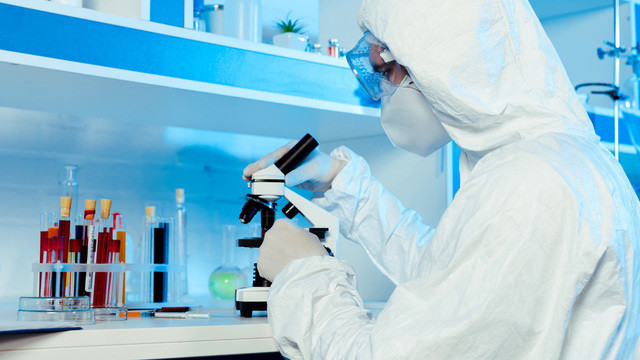In early January, the scientific world was “pleased” with another piece of news about COVID-19. Professor of the University of Cyprus, virologist, Leontios Kostrikis informed the world about the discovery of a new variant of SARS-COV-2, which was named “Deltacron” and combined the properties of the delta and omicron strains. Not all experts appreciated the “find”, many considered “Deltakron” just a laboratory error.
 2212
2212
Deltacron was detected in 25 (according to some sources, 24) patients with coronavirus in Cyprus. The genomic sequences found during the sequencing of the virus genome were sent to the international database GISAID. The proposed new strain has a delta genetic basis, but has incorporated at least 10 mutations from the omicron.
WHO Technical Team Lead Maria van Kerkhove said in her Twitter that the Cypriot 'novelty' is most likely a laboratory error due to contamination of the samples. She also asked to refrain from usingthe use of the word “deltacron”, as well as fluron or fluron, which are used in the media to refer to the simultaneous infection with both coronavirus and influenza.
In defense of his theory, Prof. Kostrikis said that the identified cases of infection “indicate evolutionary pressure on the ancestral strain to acquire these mutations, and not the result of a single recombination event.” The scientist also stated that Deltacron was also found in Israel.
However, not all scientists agreed with the conclusion of their Cypriot colleagues that Deltacron is the product of a natural fusion of other strains. So professor at the University of Birmingham (England) Nick Loman, considers it a “technical artifact.” Another British scientist, geneticist Tom Peacock, wrote on his Twitter microblog that real recombinants appear several months after different strains begin to circulate together. Doubt the reality of “Deltakron” and in the domestic Rospotrebnadzor.
“On January 7, 2022, 25 sequences of a new “variant” of coronavirus were indeed deposited in the international GISAID database. I put the word “option” in quotation marks because, upon closer examination, they turned out to be similar to laboratory contamination, that is, contamination of some samples by others,” said Kamil Khafizov, head of the scientific group for the development of new diagnostic methods based on sequencing technologies at the Central Research Institute of Epidemiology of Rospotrebnadzor. /p>
While scientists are arguing about the reality of the Cypriot Deltacron, a real new strain of B.1.640.2 has been discovered in France. It was identified in a traveler who flew in from Cameroon and managed to infect at least 12 people with it. This variant of SARS-COV-2 has 46 mutations, two of which, however, have already been found in previous strains.
It is too early to talk about the danger of B.1.640.2, which does not even have its own name yet. The number of detected infections is small. As well as it is impossible to speak about the origin of this strain. Despite the fact that the “novelty” was brought from Cameroon, it could also appear in another country.
